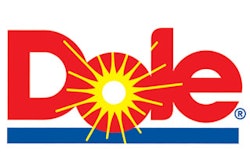This article first appeared in IMPO's May 2013 issue.
After an extra snowy winter, many of us here in Wisconsin looked forward to the reprieve that spring would bring. Instead, it has been one cold, dreary rainstorm after another. You’d think we’d be glad for the change in nature of this precipitation, but it just compounds the fact that we’ve been inside day in and day out.
Recently, Kiplinger released a forecast of its own, and it’s a direct and complex identification of both the good and the bad elements facing manufacturers and the economy as a whole. The Forecasts for Manufacturing Decision-Making, released in April, highlights some important factors. Notably, Kiplinger cites that, despite losing some steam this year, manufacturing will still power the economy and continues to outpace gains in the economy as a whole, both this year and next. According to the report, the following sectors lead the charge:
- Autos and auto parts: still going strong, with growth of about 4 percent this year and 5 percent in 2014.
- A good two years ahead for wood products as the housing market picks up. Look for 10 percent growth this year and 18 percent or so next year, as demand for kitchen cabinets, lumber, flooring, etc., soars.
- Ditto, aerospace products and parts, despite cutbacks from the Department of Defense. Growth in commercial sales and exports will more than offset the decline in orders from the U.S. military. Boeing is looking at 6 percent more commercial deliveries this year than last, for example. Overall, about a 10 percent gain in aerospace output this year and more than 18 percent in 2014.
- Indeed, a bright outlook for all high-tech manufacturing, with strong demand for medical devices, wind power equipment, 3-D printers, robotics, and the like. Computers and electronics, particularly, will do well this year and next, with output getting an extra boost from the emerging reshoring trend.
Most interesting, the report predicts that by 2014, production will match 2007 levels — a significant boon for manufacturers, especially those competing on a global scale.
That said, the bleak points from Kiplinger cite that it will take until 2017 for the jobs to pick up to 2007 levels. Slowly growing industries include food, plastics, and chemicals, and areas like textiles and apparel bring up the rear. In addition, the federal sequester cuts will likely cut consumer spending, therefore having an effect on the overall GDP.
Ultimately, it’s another mixed bag of results, focusing on slow growth and a variety of winners and losers.
It feels similar to our weather here. The air may have warmed, but it hasn’t actually changed our prospects too much. Did manufacturing survive the winter only to get pounded with rain? Bradley Holcomb of ISM’s monthly Manufacturing Report on Business agrees that many “headwinds” have begun to constrain the pace of growth, namely the reinstated payroll taxes and high gas prices for consumers, along with wage and salary increases that have barely exceeded the rate of inflation. But, says Holcomb, “If you look at the first three months of 2013 combined, we’re on a very good track. This is perhaps a little bit of a pause. A lot of the supporting metrics are in positive territory. For example, exports and imports are really strong, showing the global economy is participating in a meaningful way.”
I’ll hope that Holcomb’s words, along with the bright points in the Kiplinger report, support an indication that there is some sun peeking out from the clouds. But what I’d really like to know, IMPO readers, is which parts of these reports are more in sync with what you’re seeing on the front lines. Does your industry feel strong? Do you feel like you have more job security than you did in 2009? Are you still taking the same “wait and see” approach that’s dominated the discussion since the recession? Is the storm about to break, or are you looking at more of the same?
Email me at [email protected].


















